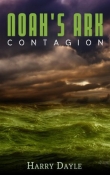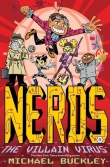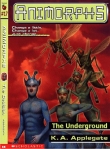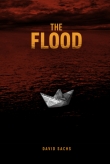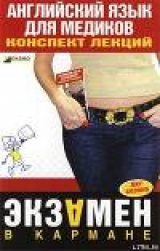
Текст книги "Английский язык для медиков: конспект лекций"
Автор книги: Елена Беликова
Жанры:
Языкознание
,сообщить о нарушении
Текущая страница: 4 (всего у книги 12 страниц)
ЛЕКЦИЯ № 12. Skull
The extensive chapter covers the major bones of the skeleton as well as their associated muscles and tendons. Blood suppfy and inner-vation are reviewed for each muscle group. Bones of the skull may be classified as belonging to the neurocranium (the portion of the skull that surrounds and protects the brain) or the viscerocranium (i. e., the skeleton of the face). Osteology: bones of the neurocranium: Frontal, Parietal, Temporal, Occipital, Ethmoid, Sphenoid.
Bones of the viscerocranium (surface): Maxilla, Nasal, Zygomatic, Mandible. Bones of the viscerocranium (deep): Ethmoid, Sphenoid, Vomer, Lacrimal, Palatine, Inferior nasal concha Articulations: Most skull bones meet at immovable joints called sutures. The sole exception is the temporomandibular joint, a synovial joint that has a hinge-gliding movement. The coronal suture is between the frontal and the parietal bones. The sagittal suture is between two parietal bones. The lambdoid suture is between the parietal and the occipital bones. The bregma is the point at which the coronal suture intersects the sagittal suture and is the site of the anterior fontanelle in an infant.
The lambda is the point at which the sagittal suture intersects the lambdoid suture and is the site of the posterior fontanelle in an infant. The pterion is the point on the lateral aspect of the skull where the greater wing of the sphenoid, parietal, frontal, and temporal bones converge. The temporomandibular joint is between the mandibular fossa of the temporal bone and the condylar process of the mandible.
The parotid gland is the largest of the salivary glands and has a dense connective tissue capsule. Structures found within the substance of this gland include the following: Motor branches of the facial nerve. CN VII enters the parotid gland after emerging from the stylomastoid foramen at the base of the skull. Superficial temporal artery and vein. The artery is a terminal branch of the external carotid artery.
External carotid artery: Retromandibular vein, which is formed from the maxillary and superficial temporal veins.
FACE: The muscles of facial expression are derived from the second pharyngeal arch and are supplied by motor branches of CN VII Таблица 2.

Great auricular nerve, which is a cutaneous branch of the cer vical plexus. Auriculotemporal nerve, which is a sensory branch of V3. It supplies the TMJ and conveys postganglionic parasympathetic fibers from the otic ganglion to the parotid gland. Parotid (Stensen's) duct, which enters the oral cavity at the level of the maxillary second molar. The facial artery is a branch of the external carotid artery in the neck. It terminates as the angular artery near the bridge of the nose. The facial vein parallels the course of the facial artery. It terminates by joining the anterior branch.
New words
extensive – обширный
to cover – покрывать
brain – мозг
frontal – лобная
parietal – теменная
temporal – височная
occipital – затылочная
ethmoid – решетчатая
sphenoid – сфеноидальная
maxilla – верхняя челюсть
nasal – носовой
zygomatic – скуловой
mandible – нижняя челюсть
ethmoid – решетчатая
sphenoid – клиновидная
vomer – сошник
lacrimal – слезная
palatine – небная
nasal concha – носовая раковина
Запомните следующие застывшие словосочетания.
to have (cook, make, prepare) – breakfast
– lunch
– tea
– dinner
– supper
Вставьте артикль, где необходимо.
1… third lesson today is… lesson of English.
2. Pete, go to… blackboard.
3. After school I usually go… home.
4. My father always comes from… work late: at eight o'clock or at… half past night.
5. But on… Friday he comes… home early: at half past four or at… quarter to five.
6. On… Satur day and on… Sunday he does not go to… work.
7. I go to… school in… morning, so I get up early.
8. I usually get up at… quarter past seven.
9. I go to… bathroom, turn on… water and wash my face and hands.
10. My father and mother also get up early in. morning.
11. My mother works at… office.
12. She is. typist.
13. My father is… doctor.
14. He works at… polyclinic.
15. We have… breakfast in… kitchen.
16. We eat… porridge and… eggs.
17. We drink. tea.
18. My father and mother leave… home for… work at… half past eight.
19. My father goes to polyclinic, and my mother goes to. office.
20. I don't leave… home with my parents.
Answer the questions.
1. What does the extensive chapter cover?
2. What are blood suppfy and innervation reviewed for?
3. How may bones of the skull be classified?
4. Enumerate the bones of the neurocranium?
5. Enumerate the bones of the viscerocranium (deep)?
6. Enumerate the bones of the viscerocranium (surface)?
7. What is the lambda?
8. Where are the muscles of facial expression derived from?
9. What are the muscles of the scalp?
10. What are the muscles of the nose?
Make the sentences of your own using the new words (10 sentences).
Find the definite and indefinite articles in the text.
ЛЕКЦИЯ № 13. Neck
Cervical vertebrae: There are seven cervical vertebrae of which the first two are atypical. All cervical vertebrae have openings in their transverse processes, the foramina transversaria which, when aligned, produce a canal that transmits the vertbral artery and vein.
Atlas: This is the first cervical vertebra (C1). It has no body and leaves a space to accommodate the dens of the second cervical vertebra. Axis: This is the second cervical vertebra (C2). It has a tooth-shaped process, the dens (odontoid process), which articulates with the atlas as a pivot joint. Movement at this joint allows lateral rotation of the head. Hyoid bone is a small U-shaped bone, which is suspended by muscles and ligaments at the level of vertebra C3. It occupies the angle of the throat that separates the neck from the floor oral cavity.
Laryngeal prominence is formed by the lamina of the thyroid cartilage. It is more prominent in men than in women and children.
Cricoid cartilage. The arch of the cricoid, another laryngeal cartilage, is palpable below the thyroid cartilage and superior to the first tracheal ring (vertebral level C6). Triangles of the neck: The neck is divided into a posterior and an arterior triangle by the sternocleidomasto-id muscle. These triangles are subdivided by smaller muscles into six smaller triangles. Posterior triangle is bound by the sternocleidomasto-id, the clavicle, and the trapezius. The floor of the posterior triangle is formed by the splenius capitis, the levator scapulae, and the medial and posterior scalene muscles. Occipital triangle is located above the inferior belly of the omohyoid muscle. Its contents include the following: CN XI is the cranial nerve that supplies motor innervation to the tra-pezius and sternocleidomastoid muscles Cutaneous branches of the cervical plexus are the lesser occipital, great auricular, transverse cervical, and supaclavicular nerves.
Subclavian (omoclavicular, supraclavicular) triangle is located below the inferior belly of the omohyoid. Its contents include the following: Brachial plexus supraclavicular portion – roots, trunk the branches of which enter this region from behind the scalenus anterior muscle. The branches include the dorsal scapular, long thoracic, sub-clavius, and suprascapular nerves.
The third part of the subclavian artery enters the subclavian triangle from behind the scalenus anterior muscle anterior to the brachial plexus. Branches include the transverse cervical and suprascapular arteries.
The subclavian vein passes superficial to scalenus anterior muscle. It receives the external jugular vein, a superficial vein that crosses the sternocleidomastoid muscle.
Anterior triangle is bound by the sternocleidomastoid muse the mid-line of the neck, and the inferior border of the body of the mandible. Muscular triangle is bound by the sternocleidomastoid muscle, the superior belly of the omohyoid muscle, and the midline of the neck. Its contents include the infrahyoid (strap) muscles, which function to control movements the hyoid bone and larynx during speech and deglutition (swallowing). Carotid (vascular) triangle is bound by the ster-nocleidomastoid muscle, the superior belly of the omohyoid muscle and the posterior belly of the digastric muscle. The carotid triangle contains the following: Internal jugular vein; Common carotid artery, bifurcates at the upper border of the thyroid cartilage (i. e., vertebral level C3) to form the internal and external carotid arteries. The external carotid artery has six branches (i. e., the superior thyroid; the ascending pharyngeal, the lingual, the facial, the occipital, and the posterior auricular arteries). The supply structures of the neck and face; vagus nerve; hypoglossal nerve; internal and external laryngeal branches of the superior laryngeal branch of the vagus nerve. The internal laryge-al nerve conveys sensory information from the laryngeal mucosa above the level of the vocal folds, and the external laryngeal nerve supplies motor fibers to the cricothyroid, an intrinsic muscle of the larynx. Digastric (submandibular) triangle is bound by the anterior and posterior bellies of the digastric muscle and the inferi or border of the body of the mandible. The floor of this tri angle is formed by the hyoglos-sus and mylohyoid muscles. It contains the submandibular salivary gland. Submental triangle is bound by the anterior belly of the digastric muscle, the hyoid bone, and the midline of the neck. The floor of this triangle is formed by the mylohyoid muscle. It contains the submental lymph nodes. Root of neck: This area communicates with the superior medi astinum through the thoracic inlet. Structures of the region include the following: subclavian artery and vein. The subclavian artery passes poste rior to the scalenus anterior muscle, and the vein passes ante rior to it. Branches of the artery include: vertebral artery; thyrocervical trunk, which gives rise to the inferior thyroid, the transverse cervical, and the suprascapular arteries; Internal thoracic artery.
Phrenic nerve is a branch of the cervical plexus, which arises from C3, C4, and C5. It is the sole motor nerve to the diaphragm. It crosses the anterior scalene muscle from lateral to medial to enter the thoracic inlet.
Recurrent laryngeal nerve is a branch of the vagus nerve. This mixed nerve conveys sensory information from the laryngeal; mucosa below the level of the vocal folds and provides motor innervation to all the intrinsic muscles of the larynx except the cricothyroid muscle.
Thoracic duct terminates at the junction of the left subclavian and the left internal jugular veins. On the right side of the body, the right lymphatic duct terminates in a similar fashion.
Fascias of the neck: Superficial investing fascia encloses the platys-ma, a muscle of facial expression, which has migrated to the neck.
Deep investing fascia surrounds the trapezius and sternoclei – do-mastoid muscles.
Retropharyngeal (visceral) fascia surrounds the pharynx.
Prevertebral fascia invests the prevertebral muscles of the nee (i. e., longus colli, longus capitis). This layer gives rise to a derivative known as the alar fascia.
The major muscle groups and their innervations. A simple method of organizing the muscles of the neck is based on two basic principles: (1) The muscles may be arranged in group according to their functions; and (2) all muscles in a group share common innervation with one exception in each group.
Group 1: Muscles of the tongue. All intrinsic muscles plus all but one of the extrinsic muscles (i. e., those containing the suffix, glossus) of the tongue are supplied by CN XII. The one exception is palatoglos-sus, which is supplied by CN X.
Group 2: Muscles of the larynx. All but one of the intrinsic muscles of the larynx are supplied by the recurrent laryngeal branch of the vagus nerve. The sole exception is the cricothyroid muscle, which is supplied by the external laryngeal branch of the vagus.
Group 3: Muscles of the pharynx. All but one of the longitudinal and circular muscles of the pharynx are supplied by CNs X and XI (cranial portion). The sole exception is the stylopharyngeus muscle, which is supplied by CN IX.
Group 4: Muscles of the soft palate. All but one of the muscles of the palate are supplied by CNs X and XI (cranial portion). The sole exception is the tensor veli palatini, which is supplied CN V3.
Group 5: Infrahyoid muscles. All but one of the infrahyoid muscles are supplied by the ansa cervicalis of the cervical olexus (C1, C2, and C3). The exception is the thyrohyoid, which is supplied by a branch of C1. (This branch of C1 also supplies the geniohyoid muscle).
New words
neck – шея
cervical – цервикальный
vertebrae – позвоночник
transverse – поперечный
artery – артерия
vein – вена
atlas – атлант (первый шейный позвонок)
axis – ось
movement – движение
joint – сустав
to allow – позволять
lateral – боковой
rotation – вращение
head – голова
cricoid cartilage – перстневидный хрящ гортани
posterior – следующий
triangle – треугольник
subdivided – подразделен
scapulae – лопатка
medial – медиальный
scalene – лестничная мышца
brachial plexus – плечевое сплетение
to receive – получать
vagus nerve – блуждающий нерв
hypoglossal nerve – подъязычный нерв
laryngeal branches – гортанные ветви
Запомните следующие застывшие словосочетания.
Застывшие словосочетания Таблица 3.

Заполните пропуски, где необходимо.
1. Every day my husband goes to… work, my son goes to… school and I go to… institute.
2. There is… new school at… corner of our street.
3. My daughter came… home from… school on. Monday and said to me: «There will be… parentsmeeting on… tenth of February at six o'clock in… evening.
4… teacher told us… very interest ing story at… lesson.
5. When… bell rang, pupils went into… classroom.
6. We are usually at… school from nine o'clock in… morning till two o'clock in… afternoon.
7. We don't go to… school on… Sunday.
8. What do you do after… breakfast? – After… breakfast I go to… school.
9. My granny likes to read I… book after… lunch.
10… people usually have… breakfast in… morning.
11. They have. dinner in. afternoon.
12. In… evening… people have.supper.
13. Who cooks… dinner in your family?
14. Yesterday father told us… very interesting story at… breakfast.
15. What did you have for… lunch at… school Wednesday?
16. We had… salad and. tea.
17. My mother never has… supper with… family.
18. She does not like to eat in… evening.
19. When do you clean your teeth in… morning: before breakfast or after. breakfast?
20. Usually I have… tea for… lunch.
Answer the questions.
1. How many vertebrae are in the cervical vertebrae?
2. How many of them are atypical?
3. How is the first cervical vertebra called?
4. How is the second cervical vertebra called?
5. What does the second cervical vertebra have?
6. What movement pivot joint allows to do?
7. What is the form of hyoid bone?
8. Where is subclavian triangle located?
9. With help of what is digastric triangle bound by?
10. What are the fascias of the neck?
Make the sentences of your own using the new words (10 sentences).
Find the definite and indefinite articles in the text.
ЛЕКЦИЯ № 14. Thoracic wall
There are 12 thoracic vertebrae. The vertebrae have facets on their bodies to articulate with the heads of ribs; each rib articulates with the body of the numerically corresponding vertebra and the one below it. The thoracic vertebrae have faces on their transverse processes to articulate with the tubercles of the numerically corresponding ribs. Sternum: the manubrium articulates with the clavicle and the first rib. It meets the body of the sternum at the sternal angel an important clinical landmark.
The body articulates directly with ribs 2-7; it articulates interiorly with the xiphoid process at the xiphisternal junction. The xiphoid process is cartilaginous at birth and usually ossifies and unites with the body of the sternum around age 40.
Ribs and costal cartilages: there are 12 pairs of ribs, which are attached posteriorly to thoracic vertebrae.
Ribs 1-7 are termed «true ribs» and attach directly to the sternum by costal cartilages.
Ribs 8-10 are termed «false ribs» and attach to the costal cartilage of the rib above. Ribs 11 and 12 have no anterior attachments, and are therefore classified as both «floating ribs» and false ribs. The costal groove is located along the inferior border of each rib and provides protection for the intercostal nerve artery, and vein, ribs 1, 2, 10, 11, and 12 are atypical. Muscles: external intercostal muscles.
There are 11 pairs of external intercostal muscles. Their fibers run anteriorly and inferiorly in the intercostal spaces from the rib above to the rib below.
These muscles fill the intercostal spaces from the tubercles of ribs posteriorly to the costochondral junctions anteriorly; they are replaced anteriorly by external intercostal membranes. Internal intercostal muscles: there are 11 pairs of internal intercostal muscles. Their fibers run posteriorly and inferiorly in the intercostal spaces deep to the external layer.
These muscles fill the intercostal spaces anteriorly from the sternum to the angles of the ribs posteriorly; they are replaced posteriorly by internal intercostal membranes.
Innermost intercostal muscles: the deep layers of the internal intercostal muscles are the innermost intercostal muscles.
These muscles are separated from the internal intercostal muscles by intercostal nerves and vessels.
Subcostalis portion: Fibers extend from the inner surface of the angle of one rib to the rib that is inferior to it.
Fibers may cross more than one intercostal space, Transversus tho-racis portion: Fibers attach posteriorly to the sternum. Fibers cross more than one intercostal space.
Internal thoracic vessels, branches of the subclavian arteries, run anterior to these fibers. Intercostal structures
Intercostal nerves: there are 12 pairs of thoracic nerves, 11 intercostal pairs, and 1 subcostal pair.
Intercostal nerves are the ventral primary rami of thoracic spinal nerves. These nerves supply the skin and musculature of the thoracic and abdominal walls.
Intercostal arteries: there are 12 pairs of posterior and anterior arteries, 11 intercostal pairs, and 1 subcostal pair.
Anterior intercostal arteries.
Pairs 1-6 are derived from the internal thoracic arteries.
Pairs 7-9 are derived from the musculophrenic arteries.
There are no anterior intercostal arteries in the last two spaces; these spaces are supplied by branches of the pos terior intercostal arteries.
Posterior intercostal arteries: the first two pairs arise from the superior intercostal artery, a branch of the costocervical trunk of the subcla vian artery.
Nine pairs of intercostal and one pair of subcostal arter ies arise from the thoracic aorta.
Intercostal veins: Anterior branches of the intercostal veins drain to the internal thoracic and musculophrenic veins.
Posterior branches drain to the azygos system of veins.
Lymphatic drainage of intercostal spaces: anterior drainage is to the internal thoracic (parasternal) nodes.
Posterior drainage is to the paraaortic nodes of the poste rior mediastinum.
New words
thoracic – грудной
wall – стенка
below – под
sternum – грудина
clavicle – ключица
xiphisternal – грудинный
true – правдивый
false – фальшивый
groove – углубление
above – над
anteriorly – раньше
intercostal – межреберный
subcostal – подкостный
portion – часть
transversus – поперечный
musculophrenic – мышечный грудобрюшной
paraaortic – парааортальный
mediastinum – средостение
Запомните следующее застывшее словосочетание.
I to watch _ TV
Если перед существительным стоит вопросительное или относительное местоимение, артикль опускается.
E. g. What colour is your cat?
I want to know what _ book you are reading.
Заполните пропуски, где необходимо.
1. My… aunt and my… uncle are… doctors.
2. They work at… hospital.
3. They get up at seven o'clock in… morning.
4. They go to… bed at eleven o'clock.
5. I work in… morning and in. after noon.
6. I don't work in… evening. I sleep at… night.
7. When do you leave… home for… school?
8. I leave… home at… quarter past eight in… morning.
9. What does your mother do after… breakfast?
10. She goes to… work.
11. Is there… sofa in your… living-room?
12. Yes, there is… cosy little… sofa in… living-room.
13. Where is… sofa? – It is in… corner of… room to… left of… door.
14. I like to sit on this… sofa in… front of… TV-set in… evening.
15. There is… nice coffee-table near… window.
16. There are… newspapers on… coffee-table.
17. There is… tea in… glass.
18. When do you watch… TV? – I watch TV in… evening.
19. We have… large colour TV-set in our… room.
20. There is. beautiful vase on… TV-set. There are… flowers in… vase.
Answer the questions.
1. How many thoracic vertebrae are there?
2. What does each rib articulate with?
3. What does the manubrium articulates with?
4. With how many ribs does the body articulates directly?
5. How many pairs of ribs are there?
6. How are termed ribs 1-7?
7. How are termed ribs 8-10?
8. How are classified ribs 11-12?
9. How many pairs of thoracic nerves are there?
10. What does intercostal nerves supply?
Make the sentences of your own using the new words (10 sentences).
Find the definite and indefinite articles in the text.

